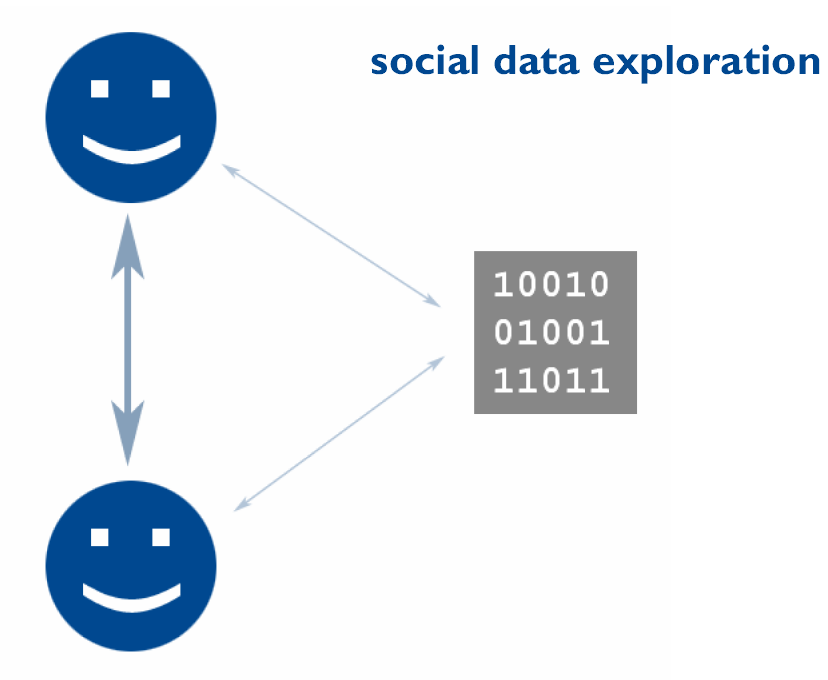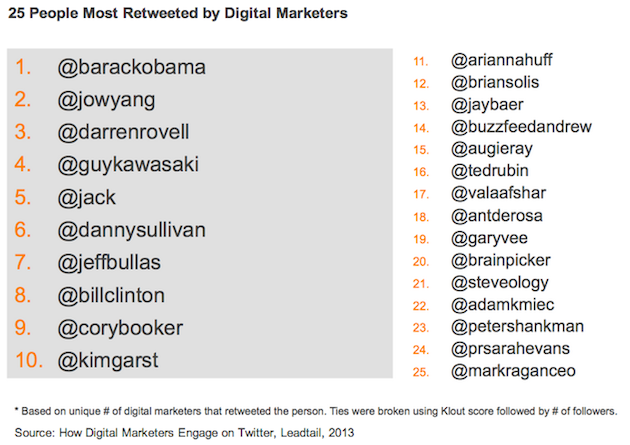My grandmother first shared that proverb with me while trying to impart some fiscal responsibility to a then-oblivious 5-year-old. Who knew it might lead to this.
Looking back at Breather... and moving forward
Life at the speed of hyper-growth is unlike any other experience. As the VP, Growth and Marketing at Breather, I've witnessed some amazing transformations in the past 18 months.
Cayman Compass: Marketing guru goes ‘viral’
I recently visited the beautiful Cayman Islands to speak about content marketing and What Makes Ideas Spread at the Cayman Islands Marketing Professionals Association 2nd Annual Marketing Conference.
It was a fabulous day of networking with amazing people and sharing ideas about the nature of marketing today, and I'm grateful to the team at CIMPA for including me in the event. It was my first time in the Cayman Islands, and I will definitely be back!
I was thrilled to see the local media embrace the conference and my presentation. Thanks to the Cayman Compass for the great coverage!
Check out the story here:
Cayman Compass - Marketing guru goes ‘viral’
Here is the Slideshare for my presentation - What Makes Ideas Spread:
Four Digital Marketing Tactics for Targeting & Converting Repeat Customers
An article from eMarketer caught my eye this morning, citing that the most valuable business milestone for small businesses in the US is generating repeat customers. There is no doubt that for businesses with limited sales and marketing budgets, a second purchase by a repeat customer can often be the fuel needed to acquire the next customer and further power the growth engine of a company. Adobe reports that repeat customers make up 8% of the customers of a typical online store, but they actually represent 41% of the total purchases.
Understanding this, I've outlined a few tactical approaches to converting first-time customers to the ever-coveted repeat purchaser.
Email Marketing
Customer Relationship Marketing (CRM) and database marketing have long been staples of the digital marketing playbook, and there are extremely sophisticated platforms at the marketer's disposal to target and personalize timely and relevant emails to your valuable customers. Beyond a simple demographic profile, what data do you have about your customers that can inform your communication strategy? What products or services did they purchase or browse, and what does that behaviour imply about their other potential needs or wants? When did they purchase, and what implications does that timing have on when they may need to purchase again? What third-party data can we use to better enhance our understanding of the customer? Database enhancement and append services from companies like Experian or Rapleaf can help businesses get a more robust picture of customers based on their 3rd party demographic, household, interest and purchase data. A recent study by Harris Interactive showed that 81% of surveyed customers said they were at least somewhat likely to make additional purchases, either online or in-store, as a result of personalized emails that used past purchase behaviour or preferences.
Retargeting
We've all had the experience of visiting a company's website for the first time, and then all of a sudden, as if by serendipity, every other website we visit from that moment on seems to feature ads by that same company. This is no coincidence, and is typically an indication that you are being retargeted by that brand. For a really useful primer on how this works, check out this article from eConsultancy . By creating smart retargeting segments based on products that your customers have purchased or browsed, or even based on other data you store about your customers using Custom Audience targeting on Facebook, marketers can be incredibly precise with timing, messaging and placement, serving up ads that have very high engagement and conversion rates.
Real-time offers & Personalization
Using the same types of data and targeting capabilities already discussed in this post, real time offer and personalization platforms can increase the probability that a customer that returns to your website will convert to a repeat purchaser. Amazon has long been the master of this, using Amazon Recommendations to show you the products and offers that you are statistically most likely to respond to base on extremely large consumer data sets and predictive modelling. Real time website personalization platforms allow web marketers and ecommerce companies to segment and target customers on a near one-to-one basis is real-time, ensuring that the content and offers that a return shopper sees are as a relevant as possible. There are a tremendous amount of solutions in the marketplace, some of which are covered by Dave Chaffey and Giancarlo Cammarota .
Loyalty Programs
Despite tremendous competition in the loyalty space, loyalty and rewards programs continue to be an effective driver of repeat business and customer lifetime value. For a great overview of the state of the loyalty space, check out Colloquy's report here.
In my opinion, My Starbucks Rewards remains one of the finest examples of a brand providing utility, convenience and value through a loyalty program via a mobile experience.
Beyond a discount or a buy some, get one promotion, what additional service, utility or value add can you deliver to a customer that purchases with you multiple times. Understanding their customers' values of sustainability and eco-responsibility, Patagonia created a partnership with eBay to allow customers to easily sell their used gear, recouping some of the original cost, and empowering their customers to feel good about making a subsequent purchase with Patagonia.
How do game mechanics play into your program to lead the customer along path to purchase and ultimately incentivize conversion? Will you add a social aspect to your loyalty program to drive customer acquisition via social referral? There are a number of loyalty platforms that can easily integrate with your website or ecommerce platform, including PunchTab, BigDoor and 500Friends .
Obviously, this is just the tip of the iceberg when thinking about how to drive a repeat transaction, and each business will have unique opportunities to create the customer loyalty that is so important to bottom line growth.
Are you looking for strategic support for turning your digital customer experience into a conversion engine that drives repeat purchases and improves customer lifetime value?
Retargeting on Facebook: 3 Quick Wins Using FBX
Launched in June of 2012, Facebook's native retargeting ad product, Facebook Ad Exchange (FBX), has been proven to be extremely effective, with some partners reporting dramatically higher clickthrough rates and lower costs per conversion than traditional web retargeting.
While I won’t go deep on explaining the technical logistics of FBX here, basically, FBX advertisers place a Facebook pixel on some or all of the pages of their website in order to retarget website visitors with ads on Facebook.
Here are 3 ways your brand can use FBX advertising to accomplish your marketing goals:
1. Close the Sale
If your eCommerce website has a conversion rate of 2%, that means that 98 out of 100 visitors to your site are not buying! Let’s change that. Retarget browsers and shopping cart abandonners with offers relevant to their experience in your store to entice them to come back and complete the purchase. In the example below, we're retargeting a visitor segment that has visited two or more Nike products in our running shoes and apparel store.
An example of a Newsfeed link post ad using FBX to retarget non-converting website traffic.
2. Ask for a Post-Purchase Review
It is no secret that online reviews are effective conversion drivers, and that most online shoppers rely on peer input to make purchasing decisions. Target your past purchasers with offers that reward them for returning to your store to leave a review, or better yet, for sharing their purchase with their network on Facebook.
3. Foster Loyalty Among New Customers
Customer Lifetime Value is a key metric for most marketers, and FBX is a fantastic tool for retargeting past purchasers to start the conversation about their next purchase. You’re probably already doing this with your email CRM communications. Think about how this could translate to Facebook communications.
Facebook retargeting with FBX can be a tremendously effective and efficient way to drive conversion and improve customer loyalty and lifetime value. If you’re not using it to move the needle on these key marketing goals, you may be missing out on some low hanging fruit.
How To Avoid Fake Facebook Likes: What The Veritasium Video Doesn't Tell You
Popular science blogger, Derek Muller of Veritasium, released a YouTube video that highlights a problem with the Facebook advertising ecosystem. Derek’s experiment was also well covered by Mashable.
In his experiment, Derek tested Facebook Like ads as a method of generating Fans for his Facebook Page, Virtual Cat, and subsequently discovered that the majority of the new Likes that he garnered were (most likely) fraudulent. He theorizes that they are the result of “click farms”, shady pay-per-like service providers operated out of developing countries who deliver thousands of likes for pennies on the dollar, typically from fraudulent user accounts.
This is not a new problem. It has been widely reported over the past few years: here, here and here.
There is no doubt that this issue is a problem for Facebook. Ultimately if they want to continue to woo marketers and maintain their position as online advertising’s belle of the ball, Facebook will need to continue to purge their network of fake accounts. They've done this before and have committed to continuing to do this to maintain the integrity of the network. The Veritasium video will definitely help to hold them accountable to that task.
However, for savvy social media marketers who understand how to use Facebook’s robust advertising platform, there are ways to use targeting to reduce the risk of attracting fake Likes, if not eliminate it completely.
Let’s start with ad targeting. To sidestep possible fraudulent Likes, brands can use three of Facebook’s more sophisticated capabilities: Custom Audiences, Partner Categories and Action Spec targeting.
Custom Audiences lets marketers target (or exclude) specific users on Facebook using a unique identifier which can consist of either an email address, phone number, Facebook UID, Mobile UID, or Apple IDFA. By using customer and prospect data to define your targeting, you can be sure that your Facebook Like ads are being displayed to authentic users, and those that are most likely to engage with you. More about Custom Audiences here.
Partner Categories uses 3rd party consumer data from Datalogix, Axciom and Epsilon to create targeted segments based on past behaviour. For instance, in the Virtual Cat example used by Derek Muller in the video, he could have used the Pet Care Buyers > Cat Food and Products, a segment that consists of approximately 12,553,500 targeted users, to find real pet owners based on their past purchasing behaviour. Note that currently, Partner Categories are only available to advertisers in the US. More about Partner Categories here.
Action Spec Targeting allows brands that have deployed a Facebook App, such as Login with Facebook, or the Facebook Like Button, to target ads at users that have interacted with that application. This targeting can be extremely precise and allow brands to target users based on specific actions (i.e. Liked, Commented, Voted, etc.) and objects (i.e. Likedon ). Action Spec targeting gives brands the ability to target highly qualified audiences with extremely relevant messaging and offers, resulting in high engagement. More on Action Spec targeting here.
Using the tactics that I’ve outlined above, advertisers may find that their cost is relatively higher than the ~$0.10/Like cited by Muller in his video, which stands to reason. As ad targeting narrows, typically costs increase. At the end of the day, brands are hungry for the attention of their customers and prospects, and increasingly, those consumers are spending their time on Facebook (overwhelmingly so when compared to other social networks). Paying a premium for the attention that Facebook owns is simply a reality that advertisers neeed to decide if they are willing to accept or not.
The other systemic “problem” with Facebook’s ecosystem that Muller describes is that Facebook limits organic reach to Fans as a function of its newsfeed algorithm that displays Page content only to the fans that are most likely to engage with it. This is well covered by Search Engine Watch here. If brands want to reach 100% of their Fans on Facebook, they will need to promote their Page posts via ads. As Muller correctly describes, Fans that don’t engage with a Page's content hurt organic Page reach by diluting engagement rates. This has been much discussed already, but the simple rule of thumb here is to focus on generating Fans that are most likely to engage with (and share) your Page’s content. Savvy Facebook marketers know this.
Fan acquisition campaigns need to include a smart content marketing plan to generate near-immediate engagement from new Fans in order to have the best shot at ongoing organic access (or reach) to that Fan's newsfeed. This part of the media plan is often overlooked, but is crucial to making the most out of Facebook ad budgets and protecting the integrity of your Facebook Page and its ability to generate owned media reach. For the purpose of this post, I won’t get into the many approaches to how this can be accomplished, but if you are spending dollars on generating new Likes on Facebook and are not also thinking about how to get as many of those new Fans to engage and share your Page’s content (and quickly), then you may want to take a step back and rethink the value of your Facebook ad spend.
How do you ensure that your Page Likes are made up of authentic customers and prospects on Facebook?
Source: Kiwinz on Flickr
Talking Facebook Data at Social Commerce Strategies
I'm thrilled to announce that I'll be presenting at the premiere social commerce conference, Social Commerce Strategies, taking place in San Francisco March 31-April 2.
My presentation will be Striking Gold: Mining Social Data for Value .

Image Source:
Facebook offers brands access to an enormous amount of data about their Fans, friends of Fans and other in-network prospects.Add to this the enormous trove of valuable data that can be accessed via the Open Graph platform, and your marketing team can be easily overwhelmed with more noise than signal. What data is actionable? How can marketers use this data to better inform their communications strategy and improve acquisition efficiency?
This presentation will help you to navigate the different types of Facebook data at your disposal, as well as some replicable examples of how to uncover data that will lead to winning results.
The presentation will explore:
- Facebook Insights - More than Just a Like:The Facebook Page data you should be looking at.
- Facebook & Web Analytics: Understanding Facebook-referred traffic, and how to maximize its value.
- Permissions & Open Graph Data:The treasure trove of social data, and examples of how to monetize it.
Will you be attending SCS or be in the Bay Area that week? If so, let's touch base!
Facebook Launches Embeddable Posts
In its most recent play at integrating its service with the entire Interwebs, Facebook has completed the deployment of Embeddable Posts, a widget that allows any website or blog to include a Facebook post directly in its own content via an HTML5 or XFBML widget.
This creates enormous opportunities for syndicating all types of content, from text, photo / albums, and video from Facebook, allowing the social platform to serve as a source of news, taking a page from Twitter's playbook.
More on this from TechCrunch and some instructions on how to embed posts from Facebook .
Here's an example from a recent promotion run by audiobook retailer, Audible.
#3Things in Digital Marketing News - 08/06/13
In an attempt to revive my sadly neglected blog, I'll be using this platform to share three timely tidbits, or #3Things, from my online travels that piqued my interest in relation to digital marketing, social media, technology and innovation. Enjoy!
1. Kickstarter Launches in Canada (from Mashable)
I've always loved Kickstarter as a stellar example of how crowdsourcing and social media have been used to totally disrupt the venture capital space. Some amazing ideas have been brought to market and have thrived as a result of the reach and Kickstarter's platform, and hopefully this will give Canadian start-ups a new tool to launch their products and services in Canada and worldwide.
2. Facebook to stop supporting Adobe Flash in desktop News Feed ad campaigns (from Inside Facebook)
We know Facebook is mobile-first, and that they are trying to simplify their Ads offering, and this latest move supports both of those strategies. (It also makes me wonder if this move is in preparation for a bigger announcement about rumored video ads on Facebook).
3. Digital Marketers on Twitter: What They Share, Whom They Retweet (from MarketingProfs)
Pretty self explanatory. Loved this research from Leadtail and NetBase as another datapoint for identifying the top online influencers in the digital marketing world. Congrats to Jeremiah Owyang for being the 2nd most commonly retweeted person, second only to Barack Obama. That's quite an accomplishment!

What news bites made your #3Things today?
Remembering Steve Jobs
I remember seeing the first Macintosh computer in my friend's Dad's office as a young boy. I was 8. This mouse thingy was strange and awesome, and the computer was smiling at me.
I remember the first time I saw the Macintosh 1984 ad, and realized that advertising was about storytelling and that a good ad had the power to move me.
I remember the first time I saw the 'Crazy Ones' ad campaign. I was inspired again... and the roster of amazing Apple ads are a big reason that I work in marketing today.
I remember watching the first Apple press conference and being amazed at this man's remarkable showmanship and how down to earth he seemed at the same time. His passion was undeniable and his vision was exciting.
I remember my first iPod...the first Apple product I ever personally owned. I didn't yet understand the impact that this innovation would have on an art form and how humans would experience music, but it immediately enriched my life as I discovered and listened to more music, more often.
I remember the feeling I had when I got my iPhone... like a whole new world had opened up to me... like I was part of the future. Then I got an iPad and I lived this feeling all over again.
I remember the first time I saw his speech at Stanford. I believed in myself a little more that day, and every once in a while I go back to that video when I need a kick in the pants and a lift of spirit.
I remember the countless times I referenced the apple.com website to look for the best practice in how Apple designed a particular aspect of an online experience.
I remember the first time I set foot in an Apple store ... I felt like I had stepped into the future.
I remember the many, many discussions I've had in the past where I've referenced the Apple brand as the benchmark for excellence in branding. From their logo to their products to every single customer experience they create, I am hard pressed to point to a company that has even come close.
I never knew Steve Jobs personally, but I am forever grateful for the many ways that he and the company he built have inspired me, taught me, surprised and amazed me, entertained me and made me smile.
Today, I remember. Thanks, Steve.
What Consumers Want
Four (More) Free Fantastic Social Media Monitoring Tools
My List of Top 6 Best Lip Dub Videos
Google Sidewiki: Changing the Game?
Measuring Social Media Success? Fail.
Christina Warren over at Mashable posted an interesting piece citing a recent survey that appeared on eMarketer.
The good news: 86% of companies surveyed are employing social media in their marketing practices.
The bad news: Of these companies, 84% are not measuring the success (or failure) of their efforts.
When I read this, I almost fell off my chair.
Image courtesy of Andy Ramdin via Filckr
I would assume that there would be a higher level of scrutiny on marketing dollars that are spent in the social spaces - that the C-Suite would demand some level of accountability for these budgets being allocated to a new (and in many cases,unproven) channel.
Add to that - digital marketing, by the nature of its being, is measurable, and there are lots of great ways to easily gauge the impact of your social media marketing campaigns, depending on the goal of initiative. Here are a few:
Brand Buzz / Voice of Customer:
Some social media campaigns aim to generate discussion about your brand and increase your "share of voice". This word of mouth exposure is often referred to as earned media, and can be more valuable than bought media, as it is perceived as more credible. There are a wide array of social media monitoring tools available to measure brand mentions in the social space and determine whether the buzz is positive or negative. If your social media campaign's goal is improve your brand profile, you'll want to check out Radian6, Sysomos,Trackur and SM2 (just to name a few).
Social Opt-Ins (Fans, Followers and Friends)
Tracking the number of social opt-ins can be a great way to measure community-building initiatives. Remember that the key to measuring the real value of these is to focus on the quality of your community members, versus the quantity. Are your Fans relevant to your brand and vice-versa? Are they active participants in the online community, posting content and recommending your products to their networks? How large is their social graph, and how influential are they within it?
Link Building
If the goal of your campaign is to generate links to your website, this can easily be measured with Google Webmaster Tools using the "Links to your site" table. These links are dated based on when they were crawled, so this can give you a good idea of how they correlate with a social media campaign.
Traffic Generation
When the goal of social media marketing is clickthroughs to your website, measure ROI with data from your web analytics software, such as Google Analytics. Where is your traffic coming from and how does it behave on your site? Is there an incremental difference in the value of traffic from Facebook or a particular blog, conmpared to traffic from bought media? Does earned traffic spend more time on your site or view more pages than bought traffic?
Sales / Conversions
If you are using goal tracking within your web analytics program, you can easily measure goals, or conversions, according to traffic source. Another way to do this is to use unique promotional codes and landing pages to identify sales resulting from social media marketing campaigns.
Customer Service / Support Costs
Is your Facebook Page a place where you provide customer support, or better yet, where your customers support each other? Do you operate a community or forum containing product information and technical FAQ's (as in the case of Hewlett Packard's Community Wiki) ? If so, then there is likely a way to correlate community activity with a decrease in call center volume, support tickets and/or product returns.
As is the case in any marketing initiative, the key to success is to establish clear and measurable objectives prior to developing the strategy or campaign execution. In doing so, you'll be able to easily implement the tools needed to measure your success with at least some certainty.
Have any examples of how you have measured your social media campaigns? I'd love to hear about them in the comments...
Are You Asking The Right Questions?
Are you creating a website for your business? Is it time for an overhaul of your existing corporate web presence?
If so, you'd be well served to jump over to Seth's Blog to check out Things to ask before you redo your website . This is a great resource to help you establish your marketing objectives and priorities, and to ensure that you can launch your website project on a solid foundation - the first time. With the answers to these questions, you, your agency or a consultant can develop an airtight marketing brief that will save you time and money, and go a long way in ensuring that you get the results that you are looking for.
Thanks, Seth.
Buy Six Pixels of Separation Today!
... not because I told you to. Not because Mitch Joel told you to. Not because Chris Anderson, Dan Ariely, Dan Pink, or Craigslist founder Craig Newmark told you to in their testimonials for Mitch's book.
Buy Six Pixels of Separation because Mitch is one of the preeminent thinkers in business today. Having had the chance to work closely with Mitch for four years at Twist Image as his Vice President of Strategic Development, I can tell you that Mitch is the goods. Not only is he a brilliant and incisive business leader, speaker and blogger, Mitch is a great guy who deserves your support today as the book officially launches.
If you work in business and depend on human beings for the success of that business, then you need to understand how we are all intrinsically connected through the digital channels, and through the simple concept of Six Pixels of Separation.
Here's a sample of one of Mitch's simple and powerful musings:
Go on... buy the book. You'll be glad you did.
Matt Cutts on Google's Caffeine Update [VIDEO]
Following Google's preview release of the Caffeine Update yesterday, the most recent tweak of their famous search indexing and ranking algorithm, here's a video interview of Google's Matt Cutts from WebProNews.

Bottom line: Caffeine mostly consists of under the hood tweaks that allow for faster and more robust indexing of documents, possibly laying the groundwork for a move towards real-time search results, better semantic content interpretation, and universal search.
Rafe Needleman over at CNet also gives a pretty good roundup of Caffeine. In his exploration, news results seem to appear more prominently.
Check out Google Caffeine and let me know what differences have you noticed?
UPDATE: Word of Mouth Marketing Budgets Indicate That Social Media Marketing Is Here To Stay
... as if there was any question.
Oh, you mean the question in the title of my last post, Does Social Media Impede Sales? That was rhetorical, and the answer, in case you missed the tongue planted firmly in cheek, is, only if you're not participating.
eMarketer released some market research from PQ Media, entitledWord-of-Mouth Posts Big Gains, reporting a 26.6% increase in US word of mouth marketing expenditure in 2008, in an economy that showed media sales dropping by 3.6% for the same year. Seems like the C-Level are finally seeing the value and return from investing in the conversation.

These numbers aren't that shocking, nor is it surprising to see that the CPG and Food and Beverage categories lead the spending. Look for the Health Care and Pharma segment to significantly increase their social media budgets in the two years to come as social media usage become seven more mainstream and regulations ease in the face of a new communications landscape.
Does Social Media Impede Sales?
Loved this funny from Scott Adams this morning. Dilbert is always great for some business insight shrouded in dry sarcasm.
 Is your brand's absence in social media conversation about your products or services costing you sales? This cartoon reminded me of a Cone study performed late last year that indicated that 93% of Americans that participate in social media expect companies to have a social media presence, and 85% believe companies should be engaging with customers via social media. If your brand isn't present and active in social media, can you justify that absence to your customers? Simply being afraid of opening an honest line of dialogue with your customers could be costing you...
Is your brand's absence in social media conversation about your products or services costing you sales? This cartoon reminded me of a Cone study performed late last year that indicated that 93% of Americans that participate in social media expect companies to have a social media presence, and 85% believe companies should be engaging with customers via social media. If your brand isn't present and active in social media, can you justify that absence to your customers? Simply being afraid of opening an honest line of dialogue with your customers could be costing you...








